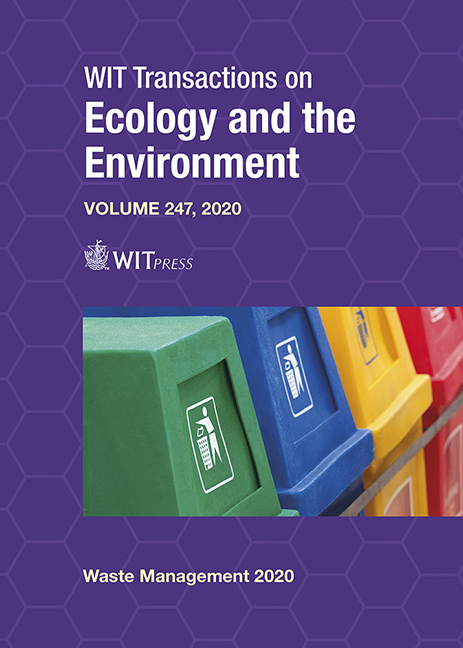IMPACT OF GROSS DOMESTIC PRODUCT CHANGE ON MUNICIPAL SOLID WASTE GENERATION IN MAPUTO, MOZAMBIQUE
Price
Free (open access)
Transaction
Volume
247
Pages
10
Page Range
15 - 24
Published
2020
Paper DOI
10.2495/WM200021
Copyright
WIT Press
Author(s)
AMAD H. A. GANI, ANTÓNIO G. DIAS, ANTÓNIO A. R. MONJANE
Abstract
The generation of Municipal Solid Waste (MSW) in Maputo grew from 2007 to 2017. Annual generation of the MSW increased from 319,010 tons in 2007 to 433,985 tons in 2017 and waste disposal in the dumpsite increased from 127,385 to 365,000. These numbers indicate that in 2007, waste disposal in dumpsite it was 39.93% from the total generated and in 2017, it was 84.10% of the total generated. The objective of this paper is to evaluate the evolution of MSW generation in Maputo municipality as a function of population growth and the variation of Maputo City’s Gross Domestic Product (GDP) from 2007 to 2017. GDP varied, population and generation of MSW grew at different rates. At this time, the economy slowed down, and GDP fell from 7.4% to 6.8% due to the country’s financial crisis. Although the national GDP and, consequently, of Maputo city fell significantly during this period, waste generation continued to grow because of the continuous migration of people from the other provinces to the capital city of Maputo. According to INE [1], the population of Maputo city had the lowest national growth, increasing slightly from 1,111,638 inhabitants in 2007 to 1,120,867 inhabitants in 2017, representing a population growth of 0.8%. During this period, MSW generation increased by 26.50%. The average capitation rate increased slightly from 0.96 kg/(inhab.day) in 2007 to 1.06 kg/(inhab.day).
Keywords
generation, dumpsite, Maputo, Gross Domestic Product (GDP), Municipal Solid Waste (MSW), capitation rate





